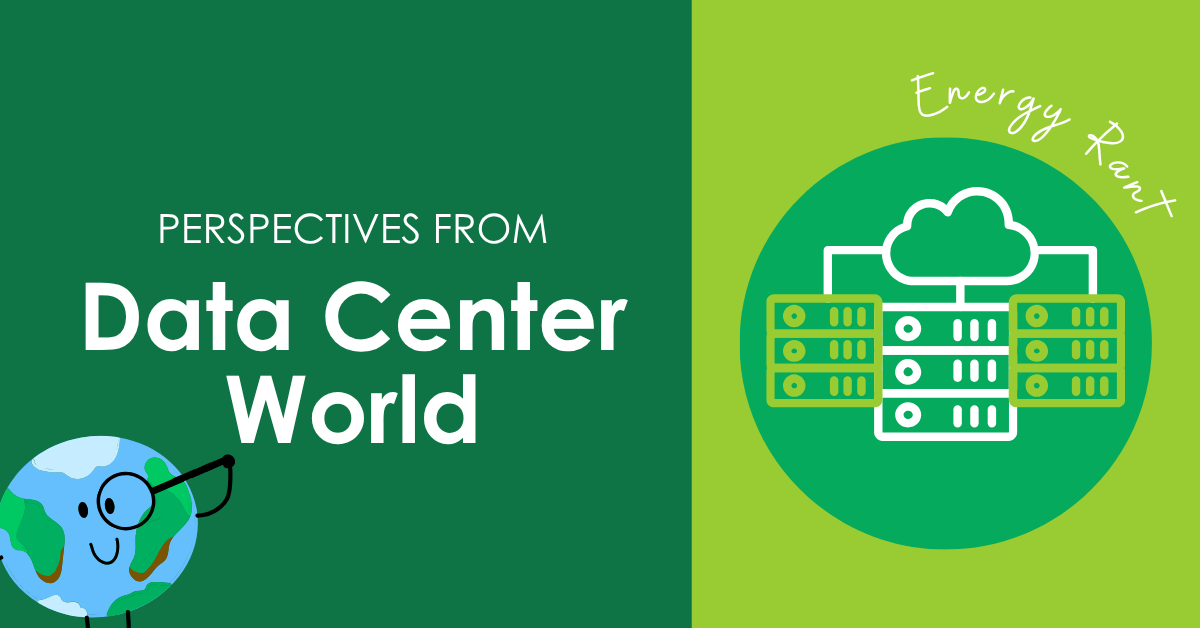
You may have seen last week that Consumers Energy sold its 13 hydroelectric dams for $1 each. Elon Musk, nor anyone else for that matter, can compete with that price tag on dispatchable storage. According to my calculations, Consumers’ 13 million MWh annual sales translates to roughly 7.7 GW of peak load, assuming a 55% load factor. With the estimated hydro portion of sales being 1%, there are 74 MW of hydro capacity among the dams: 18 cents per MW. There’s the bogey, Elon.
I’m sure these 13 facilities come with some O&M baggage.
AI or the End of Times?
One of the notes I made at the Data Center Frontiers Conference a few weeks ago was that “people always want someone’s head on a pike for rising electric costs,” or any other malady, for that matter. Data centers that every reader of this blog uses daily are becoming the bane of the public. They are seen as using “egregious amounts of power,” and being “the enemy.” Those are quotes from panelists at the conference.
Zerohedge recently published an article, AI Isn’t Free. The First Costs Are On Your Bill, And More are Coming… They call it “a struggle for survival and global power.” Really? A struggle for survival? That seems a little hyperbolic. We have plenty of Amish around to teach me how to skin a buck and run a trotline, (“A Country Boy Can Survive,” The Pressure Is On, Electra, 1982).
Data centers aren’t just AI. Smartphones that have been around since ~2007 don’t work without them. The modern-day internet dates to my grad school days when Netscape rolled out in ~1995. The linked Congressional FAQ notes that as of November 2024, AI was only consuming 10-20% of data center load, according to EPRI.
Data Center Power in Perspective
The Congressional FAQ says a 100 MW hyperscale data center is “roughly equivalent to the load from 80,000 homes.” Watch your language. That calculates to 1.25 kW per home, which is the average load of a home. Load, unless accompanied by the word “average,” is assumed to be peak load. The peak load of an average home (get it?) is closer to 3.5 to 7.0 kW. Therefore, a 100 MW data center is closer to 20,000 homes – a BIG difference. See how easy it is for the facts to get away? Profound question: are the 20,000 homes streaming Netflix, while ordering DoorDash, and keeping an eye out with Ring? Factoring those in, the data center may only hog 15,000 homes’ worth of electricity.
Stop here and think for a moment. The explosion in AI load growth and hyperscalers that grind the AI have barely started to hit the grid, AND Trump’s reshoring of manufacturing hasn’t kicked in yet either. It takes a long time for that aircraft carrier to turn on a dime.
Data Center Hotbeds
Did you know the origin of the word “hotbed, “a place or environment favoring rapid growth,” dates back to 1620 and was actually a steaming pile of manure? I know something about this. The core of a pile of manure stays hot even in below-zero winter conditions.
The Zerohedge article notes that residential electricity bills have risen $20 per month in the Columbus, Ohio, region, the nation’s fastest-growing data center market. Folks at the Data Center Trends Summit said the Columbus region has seen 1800% data center load growth since 2020, by far the most, but still far, far behind Northern Virginia, with the most significant data center loads followed by Dallas, with a third of NOVA’s data center load. Similarly, power is the greatest limitation, followed by expensive land to purchase and build.
As for finding power, panelists in the “Behind the Blueprint” session identified the best places to build data centers in the next few years.
- Pennsylvania, with an abundant supply of natural gas; two votes
- Alabama, with considerable nuclear power availability from TVA and Southern Company
- Oklahoma, with abundant natural gas: two votes
- Minnesota. What?
Texas has been a data center and crypto hotbed, but will it continue? With SB6, the State Senate added to its existing 1,500 pages of deregulations. The bill reads, “Further, large load customers [>75 MW) must disclose to ERCOT whether they possess on-site backup generators capable of generating at least 50% of the facility’s requirements. In emergencies, ERCOT may require these large load customers to either deploy their on-site generators or curtail load.” Requirements like these will drive some developers elsewhere, like north to Oklahoma.
As the world’s nooks with available utility power capacity dwindle, merchant power providers and data center developers are pairing up and leaving the utility, regulatory, political, and bureaucratic complex in the dust. I will finish up on that topic next week.
